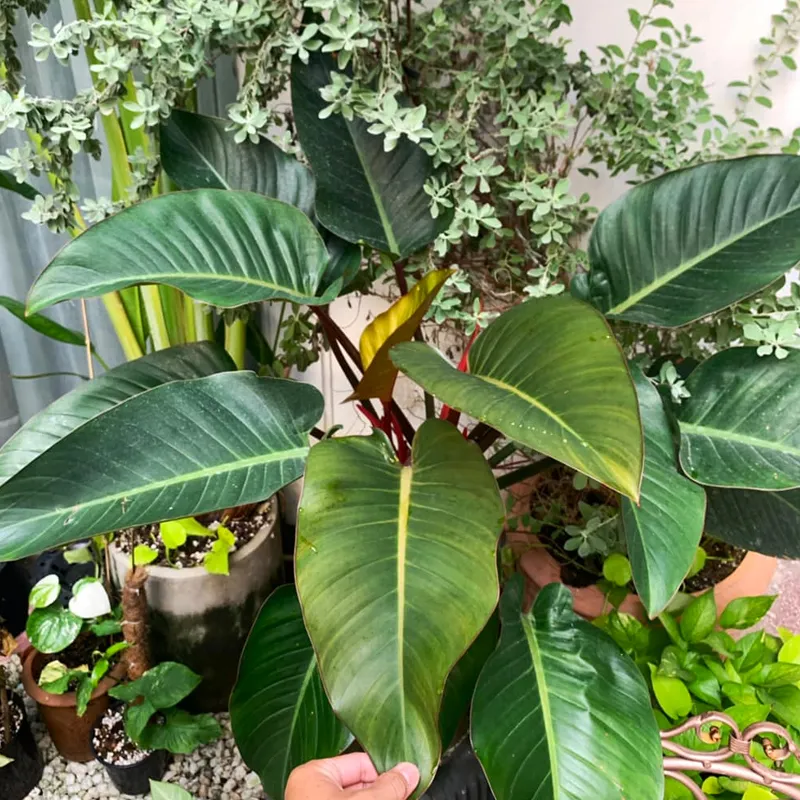What is Ilex Crenata Chesapeake?
Ilex Crenata Chesapeake is a cultivar of Japanese holly, known for its dense, evergreen foliage and compact growth habit. It is often used as a substitute for boxwood due to its similar appearance but with better resistance to diseases like boxwood blight. Chesapeake Ilex Crenata has small, glossy leaves that stay vibrant year-round, making it an excellent option for hedging or foundation plantings. Its natural shape is rounded, but with regular pruning, it can be shaped into more formal hedges.
Plant Family: Aquifoliaceae – 569 Species in Genus Ilex – Holly Tree
How Fast Does Ilex Crenata Chesapeake Grow?
One of the first things people ask about Chesapeake Ilex Crenata is its growth rate. From my experience, the growth rate of Ilex Crenata Chesapeake is moderate. It grows about 6 to 12 inches per year, depending on the care it receives and environmental conditions. In ideal conditions—well-drained soil and plenty of sunlight—it will lean toward the faster end of that range. This makes it manageable as a hedge plant, as you won’t need to prune excessively to keep it in shape.
How to Care for Ilex Crenata Chesapeake?
Caring for Ilex Crenata Chesapeake is relatively straightforward, which is why it’s such a favorite in gardens and landscapes. Here are some care tips based on my personal experience:
- Sunlight: Chesapeake Ilex Crenata does best in full sun to partial shade. I’ve noticed that in areas with more sunlight, the growth tends to be denser, which is ideal for hedging.
- Soil: This plant prefers slightly acidic, well-drained soil. In heavier clay soils, I’ve had to amend the ground with organic matter to improve drainage. Without proper drainage, the roots can become waterlogged, leading to issues like root rot.
- Watering: Once established, Ilex Crenata Chesapeake is relatively drought-tolerant. However, during the first growing season, I make sure to water it regularly to help it establish a deep root system. After that, I water during dry spells, but it generally handles moderate drought conditions well.
- Fertilizing: I feed Chesapeake Ilex Crenata in early spring with a balanced, slow-release fertilizer. This gives it a good start to the growing season. I’ve found that over-fertilizing can lead to rapid growth, which may require more frequent pruning.
- Pruning: Pruning is essential for maintaining the shape of the Ilex Crenata Chesapeake hedge. I typically prune mine in late spring, once the new growth has had a chance to emerge. This timing ensures that the plant remains tidy throughout the growing season. If you’re using it as a hedge, you’ll want to prune it more often to keep a uniform shape.
How to Propagate Ilex Crenata Chesapeake?
Propagating Chesapeake Ilex Crenata can be done through cuttings. I usually take semi-hardwood cuttings in late summer. Here’s the process I follow:
- Select healthy stems that are about 4 to 6 inches long.
- Remove the lower leaves and dip the cut end into rooting hormone.
- Plant the cuttings in a well-draining soil mix, keeping them moist and in a shaded area until roots develop.
- Once rooted, I transplant them into individual pots and gradually acclimate them to outdoor conditions before planting them in the garden.
What to Plant with Ilex Crenata Chesapeake?
Chesapeake Ilex Crenata pairs well with a variety of plants. Its dark green foliage creates a beautiful contrast with flowering plants like azaleas or rhododendrons. I’ve also planted it alongside ornamental grasses like miscanthus or maiden grass to add texture to my garden. If you’re looking for something more formal, Ilex Crenata Chesapeake works well with other evergreen shrubs like boxwood or yew, creating a uniform, sophisticated look.
How to Use Ilex Crenata Chesapeake in Landscaping?
The versatility of Chesapeake Ilex Crenata makes it ideal for various landscaping purposes. Here’s how I’ve used it in my garden:
- Hedges: Ilex Crenata Chesapeake hedge is perhaps the most common use. It provides privacy and defines garden spaces without being too imposing. I’ve used it to line pathways and create a boundary around my outdoor living areas. With regular pruning, it creates a neat and tidy appearance.
- Foundation Planting: Chesapeake Ilex Crenata works well as a foundation plant due to its compact size and year-round interest. Planted around the base of my home, it provides a soft, natural transition between the house and the landscape.
- Specimen Plant: Although it’s often used as a hedge, I’ve also seen Chesapeake Ilex Crenata used as a specimen plant in larger landscapes. Its rounded form and lush foliage make it a standout in mixed borders or as an accent plant.
Is Ilex Crenata Chesapeake Deer Resistant?
In my experience, Ilex Crenata Chesapeake is relatively deer resistant. While no plant is entirely deer-proof, I’ve noticed that this shrub is less likely to be browsed by deer compared to others in my garden. This makes it a reliable choice for areas where deer are a problem.
Final Thoughts
Ilex Crenata Chesapeake is a versatile, low-maintenance shrub that offers year-round beauty and functionality in the landscape. Whether you’re using it as a hedge, foundation planting, or even a specimen plant, its dense foliage and manageable growth rate make it a top choice. With proper care, including adequate sunlight, well-drained soil, and regular pruning, you’ll find that Chesapeake Ilex Crenata thrives in a variety of settings.
If i die, water my plants!



